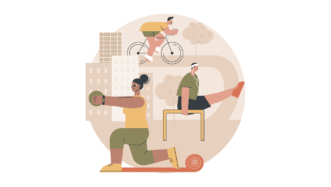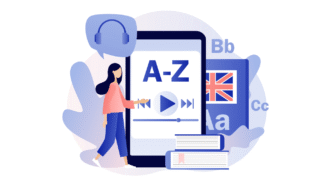LESSON OVERVIEW
The main objectives of this lesson are to:
- practise forming questions with the verb ‘be’;
- talk about countries and nationalities;
- work with two videos.
Students learn how to talk about nationalities and countries of people they know and celebrities! They watch two cool videos about countries and nationalities, and practise forming questions with the verb ‘be’ while talking about where people are from. They do lots of different activities, such as matching, putting words in the right order, choosing the correct answers, and creating dialogues.
WARM-UP, NATIONALITIES AND COUNTRIES
This lesson starts with a warm-up. Students read the names of five countries and find them on the map provided. They say which four out of the five countries speak English. Students also show where their country is on the map and say its name. Next, they watch a video and tick the countries they hear from the warm-up. They also write the names of three other countries in the video. Students watch the video again and check their answers. After that, they look at nationalities and complete gaps with the names of the countries in the boxes. (e.g. You’re Chinese – You’re from China). Then, they write similar sentences about themselves. Following that, students match famous people with the countries they are from and copy the model sentence they’re given.
QUESTIONS WITH THE VERB ‘BE’
Students start practising questions with the verb ‘be’ by looking at an example (e.g. She is Australian – Is she Australian? – Yes, she is). They complete similar questions and answers. Next, they look at a dialogue and write more by copying the example. After that, re-order words to create questions with the verb ‘be’. Then, in pairs, they ask and answer these questions. After that, students get cards and ask and answer questions about people on the cards. Next, students match languages with countries, and complete sentences about their countries. Then, students watch part of a video (1.5 minute in total) in which Londoners say what languages they speak, ticking the languages they hear. Students look at quotes from the video, choose the words used, and watch it again to check their answers. Students finish practising questions with the verb ‘be’ by matching questions and answers, and asking and answering them with a partner.
HOMEWORK/REVISION
This lesson plan also includes an additional task that you can use as homework or revision. In the task, students match halves to create questions, and then answer the questions.
The task is available in the teacher’s version of the worksheet. You can print it and hand it out to your students. It’s also included in the e-lesson plan.
WORKSHEETS
Subscribe to unlock these and many other Standalone lesson lesson plans with the Unlimited plan
Subscribe













We never say ‘Are your family…?’
It is always ‘Is your family…?’
‘Family’ is a collective noun and as such can be used with singular and plural verbs. See more details here.
Hi! Great lesson plans as always. Thank you.
Please note that “Xi Jinping” has been misspelled on slides 15-18.
Hi! Happy to hear you find the lesson useful 🙂 Sorry for the typo, we’ve just fixed that.